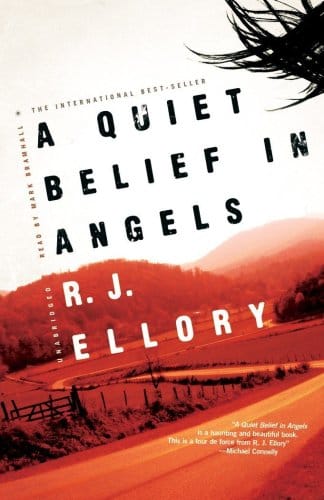A Quiet Belief in Angels: An In-Depth Review and Analysis
Explore the plot, themes, and enduring appeal of R.J. Ellory’s novel A Quiet Belief in Angels in this 800-word, SEO-friendly review.

Introduction
A Quiet Belief in Angels, the award-winning novel by British crime writer R.J. Ellory, has captivated readers since its publication in 2007. Blending coming-of-age tenderness with harrowing suspense, the story follows Joseph Vaughan, a sensitive boy growing up in Depression-era Georgia whose life is forever altered when a series of brutal child murders shocks his rural community. Over the years the crimes cast a long, lingering shadow, shaping Joseph’s identity, relationships, and creative ambitions. In this article we explore the novel’s plot, themes, characters, and historical resonance, and explain why the book remains a modern classic that resonates with lovers of literary thrillers.
Synopsis of A Quiet Belief in Angels
The novel opens in 1939 in the small town of Augusta Falls. Joseph and his friends form “the Guardians,” a youthful pact to watch over the girls in their class after the first murder occurs. Despite their vigilance, the killer continues to strike, leaving handwritten notes that taunt both parents and police. As the years pass, the mystery remains unsolved, but its emotional toll only intensifies. Joseph eventually moves to New York, pursues a career as a writer, and tries to outrun the ghosts of his boyhood. When new evidence surfaces decades later, he is forced to confront the truth behind the killings and the part his own past played in the tragedy.
Themes and Motifs
Ellory masterfully weaves universal themes—guilt, innocence, redemption, and the corruptive power of violence—through the fabric of Joseph’s life. The title itself underscores the persistent motif of faith: a belief in angels becomes a metaphor for holding onto hope when faced with unspeakable evil. Another recurring motif is writing; Joseph’s journals and unpublished manuscripts act as reservoirs for both trauma and healing, illustrating how storytelling can help make sense of chaos. Finally, the natural world—hot Georgia summers, buzzing insects, fertile fields—serves as a counterpoint to human brutality, reminding readers that beauty and horror often exist side by side.
Narrative Style and Structure
A Quiet Belief in Angels is told in first-person retrospective, allowing readers intimate access to Joseph’s psyche. Ellory’s lyrical prose evokes Southern Gothic atmospherics while maintaining the momentum of a crime thriller. Short chapters, cliffhanger endings, and time jumps create a sense of urgency, yet the author never compromises emotional depth. By shifting between past and present, Ellory underscores how trauma can warp memory, making the narrative itself an exploration of unreliable remembrance. The result is a layered reading experience that rewards both casual fans of suspense and discerning lovers of literary fiction.
Character Analysis
Joseph Vaughan anchors the story, but the supporting cast adds rich texture. Alma Mobley, Joseph’s compassionate teacher, embodies moral courage and intellectual curiosity, steering the young boy toward literature as a refuge. Sheriff Reginald Skinnard represents institutional failure; despite his best efforts, justice eludes him, highlighting the limits of authority in the face of pervasive fear. Conversely, Hawthorne Reese, the charismatic outsider suspected by townspeople, illustrates how prejudice can cloud judgment and ruin lives. Each character—victims, suspects, protectors—reflects a facet of human response to sustained terror, making the narrative feel authentic and psychologically complex.
Historical Context
Set against the backdrop of World War II and the Jim Crow South, the novel subtly addresses social issues without detracting from its central mystery. Racial segregation permeates everyday interactions, revealing an undercurrent of silence and complicity that parallels the community’s reluctance to confront the child murders directly. Meanwhile, wartime anxiety amplifies the town’s collective dread, as headlines of conflict abroad echo the private war unfolding at home. Understanding this context deepens appreciation for Ellory’s exploration of fear and suspicion, showing how external pressures can magnify local tragedies.
Why You Should Read A Quiet Belief in Angels
If you enjoy crime fiction with literary heft, Ellory’s novel offers the best of both worlds: nerve-shredding suspense and elegant, poetic language. Readers who appreciate character-driven stories will find Joseph’s moral journey compelling, while fans of historical fiction will relish the vivid recreation of 1940s rural Georgia. The book also appeals to those interested in metafiction; Joseph’s reflections on writing provide a thoughtful commentary on art as catharsis. Finally, the twisty, emotionally charged climax delivers a resolution that is as haunting as it is satisfying, ensuring the story lingers long after the final page.
Final Thoughts
A Quiet Belief in Angels stands out in contemporary crime literature for its fusion of lyrical prose, atmospheric setting, and profound psychological insight. Ellory paints violence not as a spectacle but as a corrosive force that seeps into every corner of community and conscience. Yet the novel ultimately affirms the endurance of hope—in friendships, in acts of kindness, and in the very act of believing in angels when reason dictates despair. Whether you approach it as a murder mystery, a coming-of-age tale, or a meditation on memory and redemption, this book is sure to leave an indelible mark.



